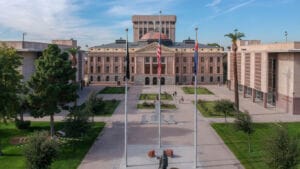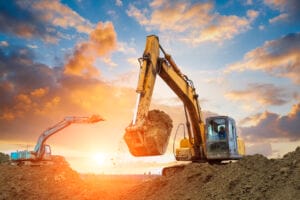Q: Are commercial foreclosures still having a big influence on markets and underlying property values?
DW: Commercial foreclosures are still an undercurrent in the overall market, however, we are seeing positive signals coming from many different areas. The “blue blood” money is definitely back and looking to make deals.
TH: Remembering the RTC days of the early 1990s, there was certainly a dumping of problem properties into the marketplace within a short period of time, causing a dramatic falling of values. This recession has played out differently. There is currently a significant inventory of REO properties in the Metro Phoenix market but properties are being sold to buyers at a slower pace, keeping values from dropping further. I believe aggressive landlords with a lot of space to lease have more of an impact on a submarket than foreclosures.
Q: Are you marketing differently than you did a few years ago?
SB: To some degree as we have subscribed to a few more web-based bid notification and search engine specialty companies. We recently updated our website with current information and it is amazing how stale a website becomes over time. I believe quality workmanship and a satisfied customer is still the best marketing tool a construction company can utilize.
TH: We continue to believe that personal, face-to-face marketing is by far the best way to get the message across in our business. So no, our base strategy has not changed. But we are using Twitter and Facebook now, and like most firms, have greatly improved our corporate website.
Q: What trends are coming to our industry?
SB: As far as construction industry trends, I think you will see advancements in materials and their composition, construction equipment and technology. We have been involved in two LEED projects recently and both were awarded Gold status. From location to recycled material to purchasing energy credits, it was interesting for to me understand the process to achieve this status.
We still need the most valuable resource — which is qualified and skilled craftsman to build the projects. Once the market starts to accelerate, getting qualified workers will be a significant issue and I hope that day is sooner than later.
I think the energy management software and automation has become more affordable and the technology is much better than even a few years ago. If a building engineer can manage utilities, AC equipment in multiple buildings from one location it becomes very efficient for those building owners. Even in home automation the advancements to manage lighting, air conditioning, etc., from a cell phone are incredible.
MH: Positive net absorption will be a continuing trend as the economy expands. eCommerce, solar technology and high technology will drive industrial absorption. Build-to-suit development will be active with several projects completed over the next 12 to 24 months. Large amounts of capital will pursue core commercial real assets driving up values. Strategic land sites will again be acquired for future development. Finally, the State of Arizona and our commercial real estate industry will aggressively pursue companies that drive job growth.
CW: The biggest trend I see is doing more with less. The Great Recession has caused all of us in the commercial real estate industry to re-evaluate how we do things. If anyone thinks things will ever be like they were in the first decade of this millennium, they will not survive.
[stextbox id=”grey”]
NAIOP Roundtable Participants’ Links:
www.bjerkbuilders.com
www.brephoenix.com
www.colliers.com
www.ejmdevelopment.com
www.legacycapitalaz.com
www.libertyproperty.com
www.mcshane-construction.com
www.ryancompanies.com
www.wwptax.com
[/stextbox]
AZRE Magazine September/October 2011


